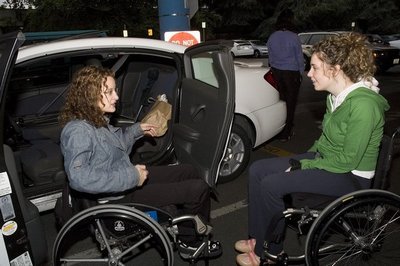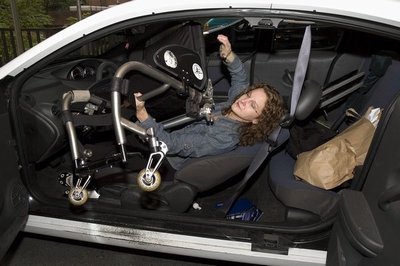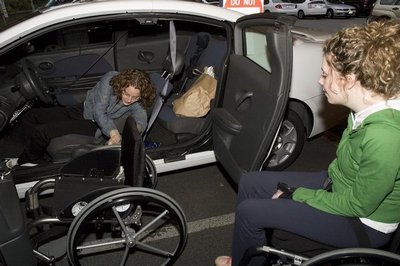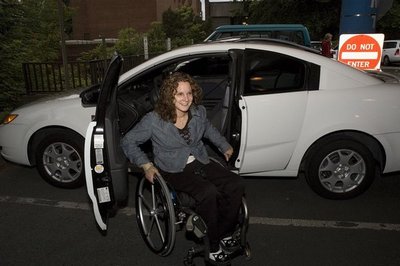January 25, 2007
Spine patients get back in the driver’s seat
A couple of years ago, Cecelia Black was like many teens — driving with a permit and practicing to become a licensed driver and more independent. Her life changed when the car in which she and her family were riding was hit head-on by another car.
“We were driving back from Hood Canal, a car crossed the center line and hit us head on,” Cecelia said. “The driver was a 16-year-old girl, a year younger than me.” Everyone survived the accident, but Cecelia sustained a spinal cord injury and now uses a wheelchair.
After receiving medical care at Harborview Medical Center and Children’s Regional Hospital and Medical Center, and rehabilitation at Providence Hospital in Everett, Cecelia has spent the past months emotionally recovering from the accident.
“She was already driving with a permit when the accident happened,” recalled her father Gordon Black.
“Of course, coming to terms with the accident is an ongoing process. I think Cecelia is coming through this better than anyone could expect.
One of her concerns and first questions was “‘How am I going to be independent, if I can’t get around?'”
Last July, Cecelia and her parents attended the UW’s Northwest Regional Spinal Cord Injury System’s Adaptive Vehicle Fair to explore ways for Cecelia to regain some of her mobility and independence.
The fair was sponsored by the Department of Rehabilitation and the Northwest Regional Spinal Cord Injury System to demonstrate some of the latest modifications in equipment for vans and vehicles.
“We had heard that the UW has the best adaptive driving program around. You know you can tell your kids one thing, but it’s better for them to see others they can relate to,” Black said.
At the fair, Cecelia met Miss Wheelchair Washington Tammy Wilber, a scheduler in the Outpatient Rehabilitation Clinic who helps coordinate the spinal cord injury forums. Wilber, who has been in a wheelchair since she was in a car accident in New Hampshire 13 years ago, drives a Saturn sedan that has been modified with adaptive doors and steering wheel and controls.
“You know it’s easy for me to talk to people who’ve lost their mobility, because I’ve been there — I know what runs through your mind,” Wilber said. “It’s really cool working in a place where I can see people become transformed over time and regain their independence.”
The UW’s Division of Occupational Therapy conducts a driving rehabilitation program to screen and instruct drivers who have had a change in their physical function or cognition.
Individuals are evaluated in clinic on strength, range of motion, visual acuity, visual perception, brake reaction time, coordination, judgment, and decision-making, knowledge of road rules, comprehension, and learning ability.
If appropriate, patients are then evaluated behind the wheel in a rehabilitation vehicle. An occupational therapist evaluates the need for assistive technology and provides specialized training as needed.
The Division can also provide prescriptions and vendor information for recommended equipment.
For more information about the Driving Rehabilitation Program, call Jane McAndless at 206-598-5857 or visit http://depts.washington.edu/rehab/care/driving.html.
For more information about the Spinal Cord Injury Forums, contact Cynthia Salzman at 206-685-3999 or csalzman@u.washington.edu, or visit http://depts.washington.edu/rehab/sci/forum.html.






